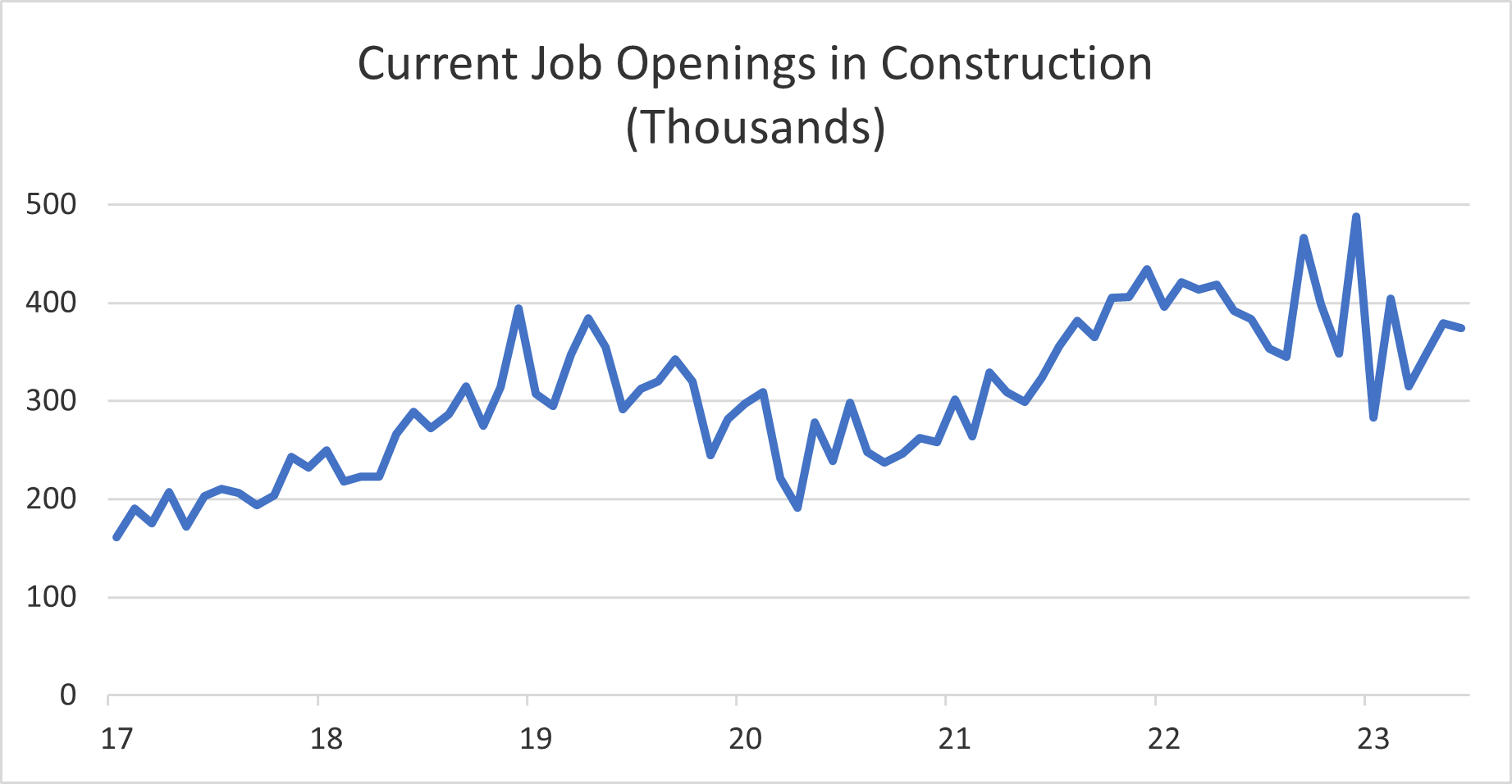by Olevia Sharbaugh Starkey, Economist at Dodge Construction Network
The Job Openings and Labor Turnover Survey published by The Bureau of Labor Statistics estimates that the number of US Job openings fell to a seasonally adjusted 9.58 Million in June. This represents a -0.4% decline from May’s revised estimate of 9.62 Million. Though a much smaller decrease than last month’s nearly 7% drop in openings, this marks the second consecutive month of decline in total US job openings. This should be music to the ears of the Federal Reserve, tasked with cooling off the US economy to combat inflation. The construction labor market posted a similarly small decline of 1% in openings from May’s revised measure of 379,000 openings to 374,000 in June.
Another indication that the labor market is slowly returning to normal is the trend in the ratio of unemployed per job opening. In a perfect world, there would be one job opening for every person that wanted one, putting the ratio at exactly one. If this number is below one, indicating that there are more openings than there are unemployed individuals in the US, the labor market is unbalanced as there is more demand for labor than there is supply of workers to fill the positions. When the opposite is true, there are too few job openings for the amount of people who would like to work. A great example of this is the Great Recession when there were around five people for every one job opening. We are currently operating in a market where there are more job openings than unemployed people, with a ratio of .62 (or 5.9 million unemployed individuals to 9.6 job openings). However, this ratio has been steadily trending back up towards a balanced market since hitting a trough in March of 2022 at .49. This indicates that though it is moving slowly, the labor market is cooling off and approaching normalcy.
A cooling labor market will help the construction sector by taking the pressure off the Federal Reserve to continue raising interest rates in order to combat inflation. Banks will in turn be able to ease up on raising rates for companies looking to finance their construction projects, making them more affordable.

